Any body shape can be a healthy one, but a thicker midsection can be a red flag

Our genetics play a role in determining where our weight takes up residence in our bodies. Some people are more likely to gain weight around their waistline, while others are more likely to see weight gain go to their hips. That’s just the way it is. People come in all different shapes and sizes, and our genes predispose us to carry our weight in different places. It’s normal.
Cleveland Clinic is a non-profit academic medical center. Advertising on our site helps support our mission. We do not endorse non-Cleveland Clinic products or services. Policy
There’s no “right” or “wrong” or “good” or “bad” when it comes to your body shape. Just like there’s no “right” or “wrong” height. It’s simply something you don’t have all that much control over.
But where you naturally carry your weight can have a big influence on your health if you’re living with overweight or obesity. Excess weight in certain parts of your body, particularly around your belly, can put you at greater risk for serious conditions.
“Your body shape doesn’t necessarily mean all that much about your health if you’re living within a healthy weight range,” says internal medicine physician Elena Borukh, MD, a specialist in obesity and diabetes. “It’s more a matter of where extra weight lies that makes a difference in terms of your risk for certain chronic diseases.”
We talked with Dr. Borukh about what your body composition may mean for your health and how you can lower your risk for chronic health conditions.
When considering your body shape and its impact on your health, you’ll want to take two things into consideration:
Your body shape is a description of where on your body your weight tends to fall. (It’s not a very scientific standard, but it’s something that most of us can readily identify with.)
Your BMI, on the other hand, is a measurement that helps you and your healthcare provider understand if you’re living within a healthy weight range. It’s a measurement that takes into account your weight and your height to assess your health. (As Dr. Borukh points out, BMI is not always a reliable number, but it’s a good starting point.) A BMI of 25 or higher is considered overweight. Obesity is defined as a BMI of 30 or more.
Your provider may also use measurements like waist circumference, or ratios such as waist-to-hip measurements, to get a better picture of your health and risks. Some providers may also use body composition machines to assess muscle mass and more to get an even more tailored understanding of your health.
Your body shape itself doesn’t necessarily signal whether you’re healthy or unhealthy, Dr. Borukh notes. Rather, it’s a combination of your body shape and an unhealthy BMI that can be a red flag for certain conditions.
Generally, people will fall into one of five standard body shapes:
Dr. Borukh breaks down each of these body types and the health risks associated with overweight or obesity for each.
People with a so-called “apple” body shape carry more weight around their midsections. Having a full waistline, or “abdominal obesity,” can be a red flag that you may be at risk for conditions like heart disease and diabetes.
The U.S. Centers for Disease Control and Prevention (CDC) says a waist circumference of more than 35 inches in women and people assigned female at birth or 40 inches in men and people assigned male at birth can be a risk factor for obesity-related conditions. To measure your waist circumference, stand up and wrap a tape measure around your middle, just above your hipbones. Keep the tape snug but don’t compress your skin.
“Research has shown us repeatedly that belly fat is the most worrisome kind, so an apple shape can be a reason for concern in people with overweight and obesity,” Dr. Borukh says.
That’s because people with apple shapes are more likely to be storing unhealthy amounts of visceral fat. Unlike subcutaneous fat, which lives just under your skin, visceral fat lies deep within your abdominal walls. It surrounds your stomach, liver, intestines and other organs.
“Visceral fat increases insulin levels, which means your body produces more insulin than it needs,” Dr. Borukh explains. “An increased insulin level or insulin resistance is the main driver of metabolic syndrome, which can be a precursor to diabetes and also puts you at higher risk for heart disease and stroke.”
She says that people who have an apple shape can lower their risk of these conditions and more by maintaining a healthy weight and waist circumference.
Eating a balanced diet — one that emphasizes lean protein and whole foods, rather than prepackaged choices — can help.
Additionally, for those who are able, following workout guidelines for getting at least 150 minutes per week of cardio exercise and twice-a-week strength training is important for keeping your weight at a healthy level. Ab workouts like crunches, planks and leg lifts can help strengthen your core and shed visceral fat. Any exercise you can do is better than none.
People who are “pear shaped” have a narrow top body and more fullness in their hips and bottoms.
People with overweight or obesity who have a pear shape can be at higher risk for varicose veins and osteoarthritis in their lower joints (like hips and knees). That’s because excess weight in the lower body can put increased pressure on your legs.
“We used to think that having a pear shape was more protective,” Dr. Borukh says. “But some studies are now showing that people who carry excess weight in their lower half may also be at a risk for visceral fat, so they may have similar risks as people with an apple shape.”
If you carry more weight in your lower body, a healthy diet and exercise can help protect you from health concerns. People with pear shapes can also benefit from exercises that target the lower body, like:
People with an inverted triangle body composition carry more of their weight in their upper body, like their chest and shoulders, as opposed to their stomach and hips.
If you’re carrying more weight up top, you may be more prone to some significant aches and pains. People with an inverted triangle body shape are more likely to experience pain in their back, shoulders and neck.
Breast reduction surgery and gynecomastia surgery may be an option for some people whose experience back pain as a result of a larger breast or chest size.
People with inverted triangle shapes can also improve their health by keeping their waistline in a healthy range through diet and exercise. Workouts that strengthen your back may also ease your discomfort.
If your body shape has less defined curves, you may be more of a ruler, or a column-shaped body type. A ruler shape may sound like it translates to “skinny” or underweight, but not necessarily.
“People can have a ruler shape and be in a healthy weight range,” Dr. Borukh says. “Or you can be a ruler shape and have underweight, overweight or obesity. A ruler shape means that your body is more in a straight line, which isn’t necessarily indicative of your BMI.”
People who have a ruler shape may be more prone to having smaller, thinner bones, which can be a risk for fractures and osteoporosis. You can lower your risk of fractures with exercises that stimulate bone growth.
An hourglass shape is characterized by having an upper and lower body in proportion to each other with a defined waistline.
Remember, though, that a “defined” waistline is relative to the rest of your body. So, people with an hourglass shape can still be at risk for visceral fat and other conditions if their BMI is 25 or higher.
Let’s say it again. Your body shape is not necessarily a health concern. It’s a natural distribution of your weight. Any body shape can be healthy.
It’s when you’re living with overweight or obesity that your natural shape can become a health risk.
Eating well and exercising regularly are key to keeping your weight in a healthy range and keeping your body strong.
But how do you get started, especially if you’re living with limitations that make exercise especially challenging?
Dr. Borukh suggests swimming and water aerobics for a low-impact, full-body workout that can be tailored to your abilities and your needs. A healthcare provider can help you create a diet and exercise plan that will be most effective for you.
Your body shape is a part of what makes you … you. It’s unique, individual and natural. And while you can’t change where your weight chooses to make its home, know that any efforts you take to keep your weight in a healthy range will do your body good.
Learn more about our editorial process.
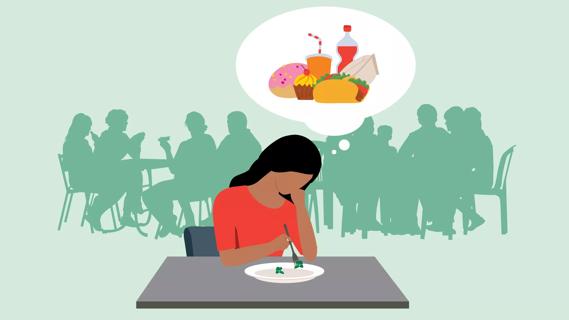
Having overweight and disordered eating is a high-risk combination that often gets dismissed or overlooked
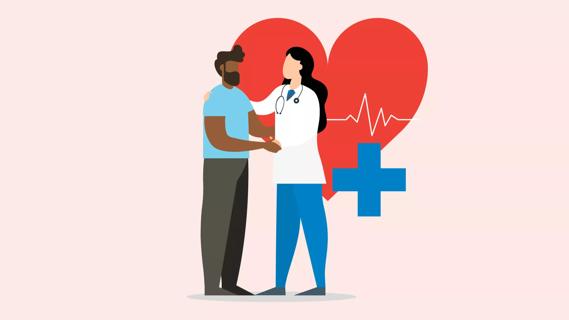
Having underweight, having overweight and having obesity can be dangerous for your heart
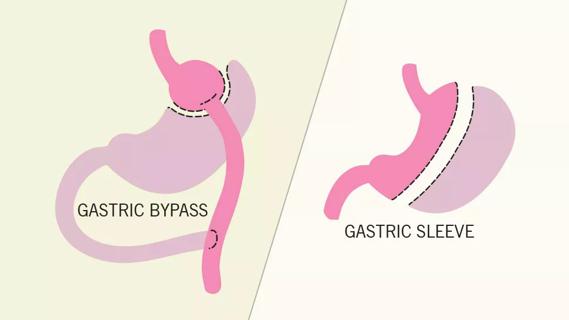
Gastric bypass and sleeve gastrectomy are different procedures that offer similar benefits, including significant weight loss
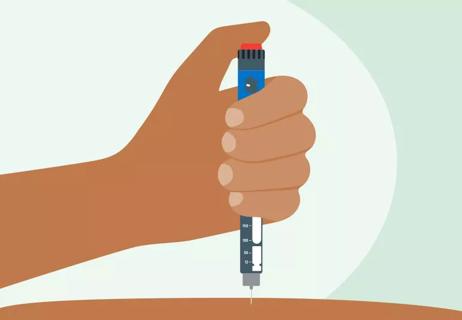
This diabetes drug is quickly gaining attention for weight loss potential
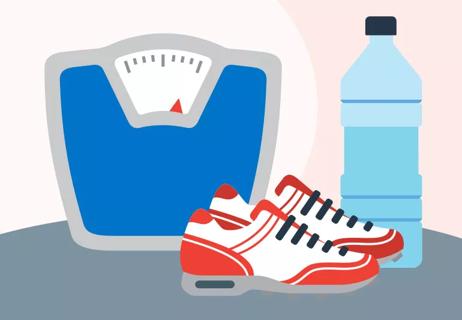
Having obesity brings long-term health risks no matter your fitness level

Updated food label guidelines make it easier to track added sugars in your diet

This diabetes med can treat obesity, but it’s not for people who just want to drop a few pounds

They’ve been altered to include fats, starches, sugars and hydrogenated oils

Your metabolism may torch 1,300 to 2,000 calories daily with no activity

A gentle touch in all the right places may help drain your sinuses